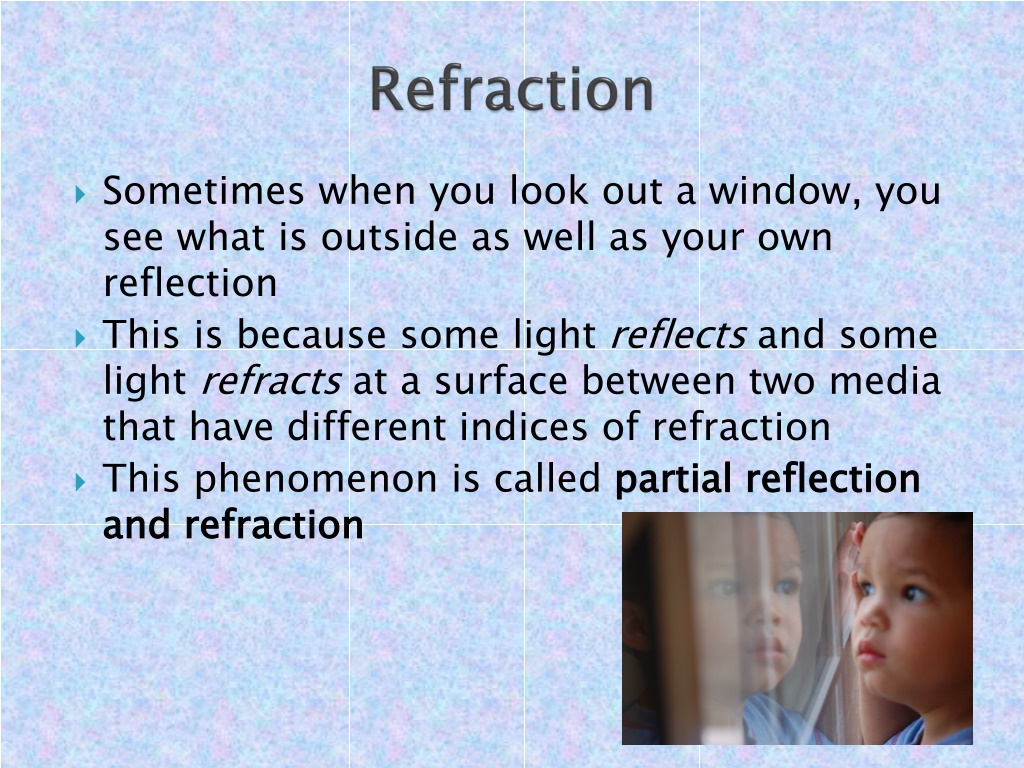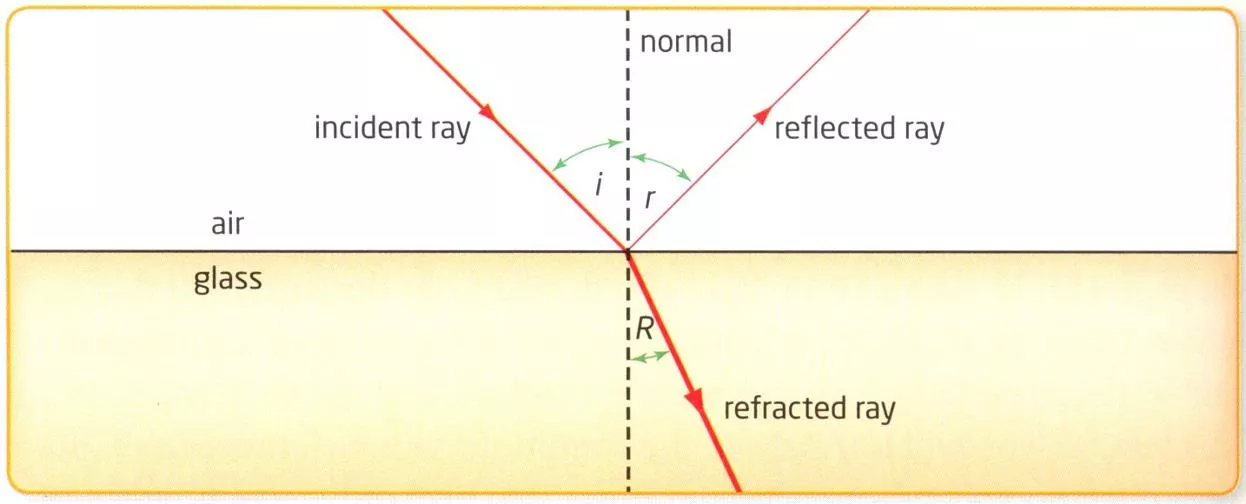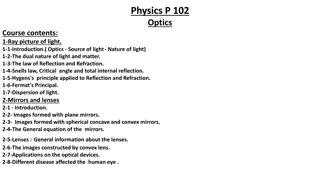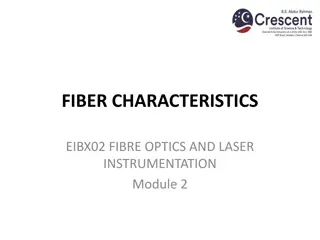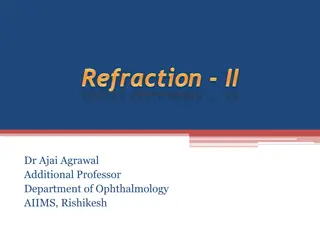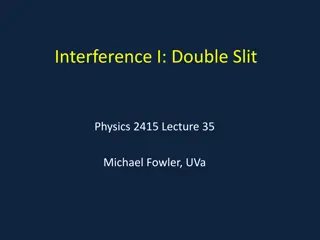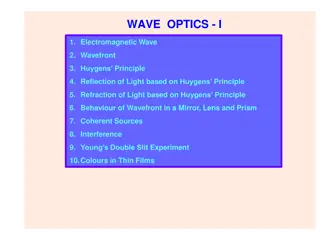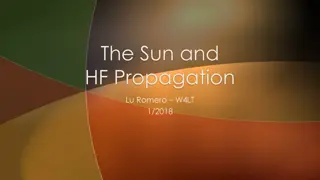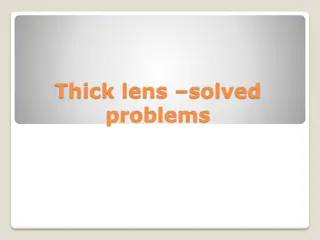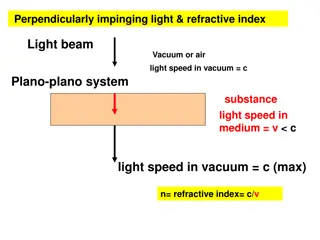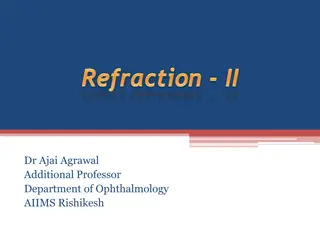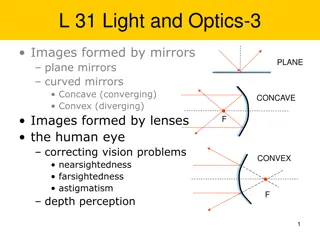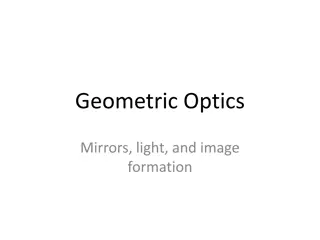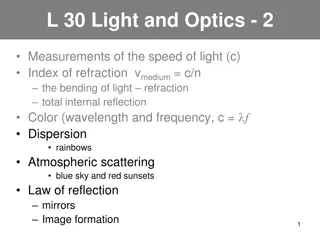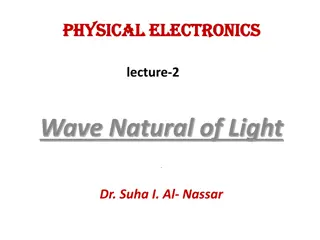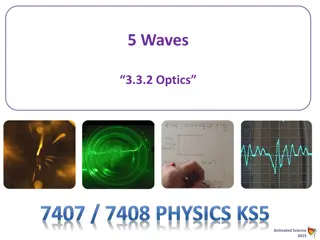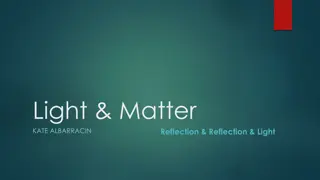Reflection and Refraction Phenomena in Optics
Reflection and refraction are fundamental phenomena in optics, occurring when light encounters surfaces with different indices of refraction. This results in partial reflection and refraction, with the amount of each depending on the angle of incidence. Beyond a critical angle, total internal reflection occurs, where all light is reflected back into the original medium. Explore how these principles manifest in everyday scenarios like looking out a window, viewing objects underwater, and using glass prisms to manipulate light.
Download Presentation

Please find below an Image/Link to download the presentation.
The content on the website is provided AS IS for your information and personal use only. It may not be sold, licensed, or shared on other websites without obtaining consent from the author.If you encounter any issues during the download, it is possible that the publisher has removed the file from their server.
You are allowed to download the files provided on this website for personal or commercial use, subject to the condition that they are used lawfully. All files are the property of their respective owners.
The content on the website is provided AS IS for your information and personal use only. It may not be sold, licensed, or shared on other websites without obtaining consent from the author.
E N D
Presentation Transcript
Sometimes when you look out a window, you see what is outside as well as your own reflection This is because some light reflects and some light refracts at a surface between two media that have different indices of refraction This phenomenon is called partial reflection and refraction partial reflection and refraction
Both reflection and refraction occur, but not equally The amount of each depends on the angle In this case, more light is refracted than reflected, as shown by the thickness of the rays
If you are standing in a clear lake, it is easy to see stones on the bottom that are near you, but impossible to see ones that are farther away For you to see an object underwater, light must hit the object, reflect off it, and travel to your eyes Because the incident rays are going from water to air, the refracted rays bend away from the normal As the angle of incidence increases, the angle of refraction increases more rapidly
As the angle of incidence continues to increase, the angle of refraction will eventually reach 90 At this angle of incidence, the refracted ray lies along the boundary between the two media No light passes into the second medium (air in this case) The angle of incidence that produces a refracted ray at an angle of 90 from the normal is called the critical angle critical angle, c
When the angle of incidence is larger than the critical angle, the angle of refraction cannot get any larger because the refracted ray would no longer be in the second medium So, at angles of incidence greater than the critical angle, no refraction occurs all the light is reflected back into the first medium This phenomenon is called total internal reflection. total internal reflection.
A glass prism the conditions for total internal reflection The critical angle between glass and air is less than 45 , so letting light hit an inner surface at exactly 45 will be totally reflected inside the glass glass prism can change the direction of light by creating When light enters to the short side of the prism, the angle of incidence is zero no refraction at surface At the long side of the prism, the angle of incidence is 45 , so the angle of reflection is 45 Total change in direction of the light is 90
When light enters the long side of the prism at any angle, the reflected light is reflected by 180 , or directly back in the direction that it came from When the angle of incidence into the prism is not 0 , the light will be refracted After the light has reflected off both inner short sides and then leaves the prism, it will refract at the same angle
Binoculars The direction of light is reflected twice in binoculars by prisms to make the path of the light longer Need to extend the path due to the distance to the focal point of the lenses used (more on that later in this unit!)
Retroreflectors Look like small plastic prisms e.g., bicycle reflectors Changes direction of incoming light by 180 Regardless of the direction that light from headlights hits the reflectors, the light is always reflected directly back to the car
Fibre Optics Fibre optics have revolutionized all forms of communication, including the internet Allows information to be sent as pulses of light instead of pulses of electricity Optical fibres are made of a glass core which is surrounded by an optical cladding The cladding is a covering made of a different kind of glass than the fibre inside
When light enters the end of the fibre in a direction that is almost parallel to the fibre, it hits the boundary between the core and the cladding at an angle that is larger than the critical angle Even when the fibre is bent, the light is totally internally reflected along the entire fibre until it reaches the other end
Telecommunications: Many copper cables that used to carry information have been replaced by fibre optics Benefits include: Signals are not affected by electrical storms Can carry many more signals over longer distances Are smaller and lighter than copper cables Medicine: An endoscope uses optical fibre bundles to assist a surgeon with minimally invasive surgery (a.k.a., keyhole surgery with small incisions) One bundle of fibres carries light into the surgery area, and another carries a video signal back to a monitor Allows faster recovery times and easier diagnostics
